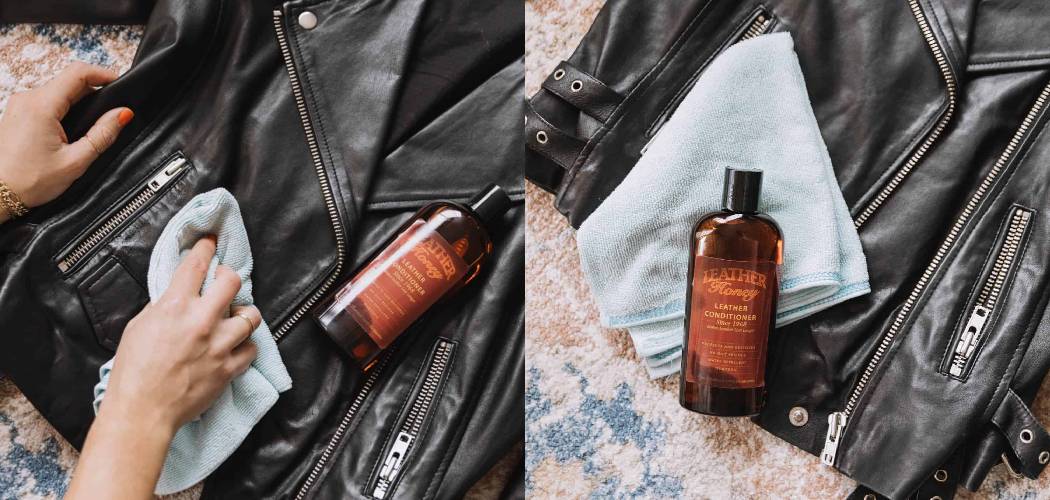Are you wondering how to keep your leather jacket soft and supple? One of the best ways to maintain the integrity and quality of your jacket is by regularly conditioning it. Leather jackets are a popular item of clothing, especially in colder climates.
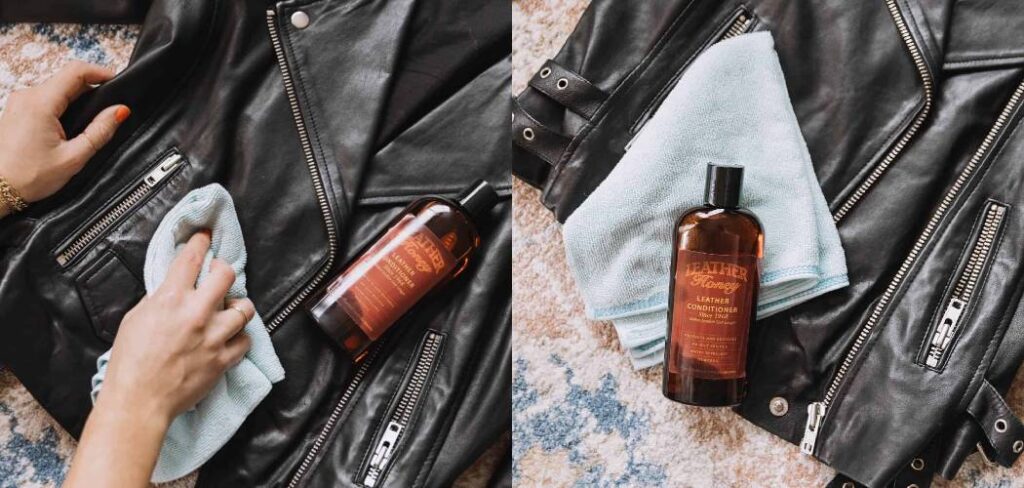
They can be expensive, so it’s important to take care of them properly to ensure they last longer. In this blog post, we will discuss how to condition leather jacket using natural ingredients.
In order to keep your leather jacket looking and feeling great for as long as possible, it’s important to condition it regularly. This will help protect the leather from fading, drying out, or cracking. There are a few different ways to condition a leather jacket, so choose the one that works best for you. Here are some easy ways to condition your leather jacket at home.
When Should You Condition Your Leather Jacket?
- After Purchasing: It’s recommended to condition your leather jacket after purchasing it, as this will help protect it from any damage caused during shipping or storage.
- Every Six Months or So: Regularly conditioning your leather jacket every six months or so will ensure that it stays soft and supple for longer.
- After Getting Wet: If your leather jacket gets wet, make sure to condition it immediately afterward to prevent any damage or discoloration.
What You Will Need
- Leather conditioning cream or natural oil (such as coconut, olive, or jojoba)
- Soft cloth
- Leather cleaner for spot cleaning before conditioning
- Brush (optional for suede jackets)
With these supplies at hand, you can condition your leather jacket easily at home.
10 Steps on How to Condition Leather Jacket:
Step 1: Clean Your Leather Jacket
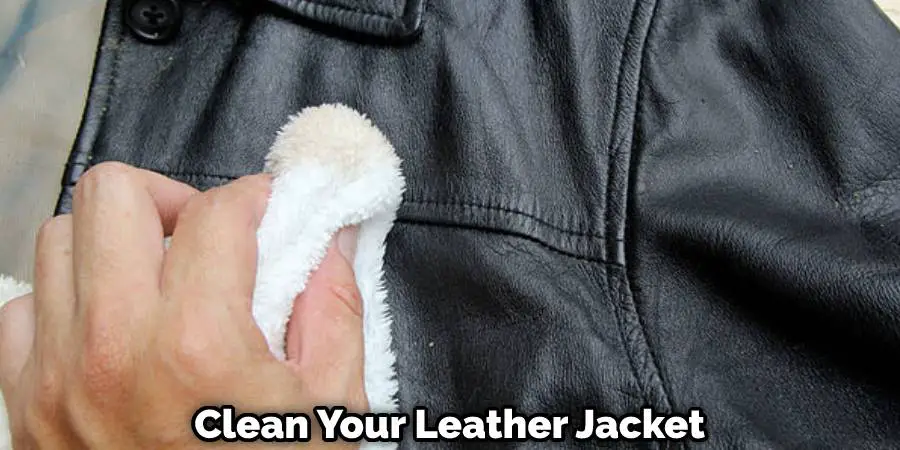
Before conditioning, it’s important to clean your leather jacket first. Use a leather cleaner and a soft cloth to spot clean any dirt or stains on the surface of the jacket. This will ensure that the conditioning is applied evenly and effectively.
Step 2: Choose Conditioning Cream or Oil
Choose a conditioning cream or natural oil and apply a small amount to your soft cloth. Gently massage the conditioning into the jacket, focusing on any areas that may be particularly dry or cracked. Don’t forget to condition the sleeves as well!
Step 3: Apply Olive Oil
If using olive oil, pour a small amount onto your cloth and massage it into the jacket in circular motions. Use a brush to brush the oil into suede jackets. Be careful not to over-saturate the leather, as this can cause it to become stiff.
Step 4: Apply Coconut Oil or Leather Conditioner
Another option is to use coconut oil or a leather conditioner specifically made for this purpose. Follow the instructions on the product and apply it to your jacket using a soft cloth.
Use a clean cloth to apply the conditioning product of your choice onto the leather in circular motions. Make sure to cover all areas evenly and thoroughly. Let sit for some minutes before wiping off any excess with another clean cloth.
Step 5: Apply Jojoba Oil
You can also apply a small amount of jojoba oil for added shine and protection. As with the conditioning product, use a clean cloth to apply the oil in circular motions onto the leather. Then, allow the jacket to dry, typically for about 20 minutes. Make sure to wipe off any excess oil with a clean cloth before wearing it.
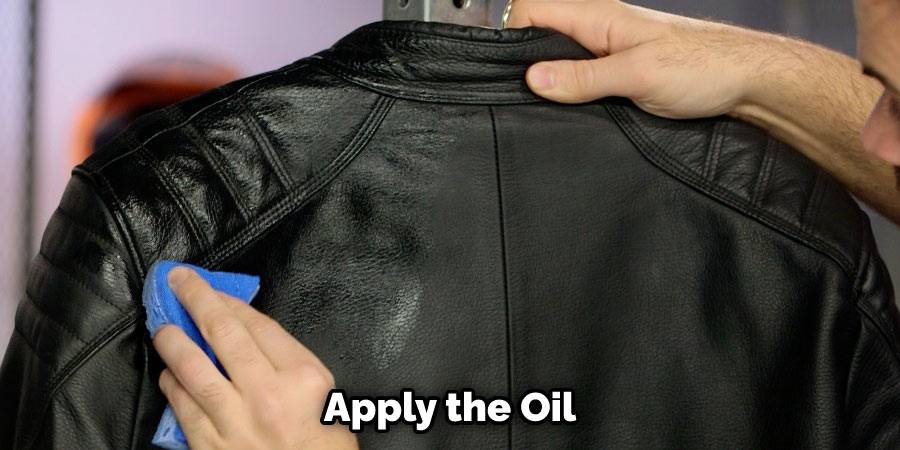
Step 6: Buff and Shine
Using a clean, dry cloth, buff the leather in circular motions to bring out the shine. And there you have it – a freshly conditioned leather jacket! Now your jacket is ready to keep you warm and stylish this winter.
Step 7: Keep Up with Regular Conditioning
Leather is durable, but it requires regular maintenance to keep it looking its best. Aim to condition your leather jacket at least every six months or more often if necessary. Pay attention to any cracks or dryness in the leather and address them promptly.
Step 8: Store Properly
When not wearing your leather jacket, store it in a cool and dry place. Hang it on a sturdy hanger or fold it and store it flat to avoid stretching or creasing the leather. And, always be sure to properly clean and condition before storing for extended periods of time.
Step 9: Prevent Damage
To prolong the life of your leather jacket, avoid getting it wet or exposing it to excessive heat. Also, be careful when wearing any accessories that may cause scratches or tears in the leather. With proper care and maintenance, you can enjoy your leather jacket for many years to come!
Step 10: Avoid Over-Conditioning
Be careful not to over-condition your leather jacket, as this can actually damage the leather. Only apply a small amount at a time and stop when the jacket starts to feel saturated with the product.
Overall, conditioning your leather jacket is a simple process that only takes a few steps and materials. By conditioning regularly and properly caring for the leather, you can keep your jacket looking great for years to come. Happy conditioning!
You Can Also Visit To How to Clean Rough Out Saddle
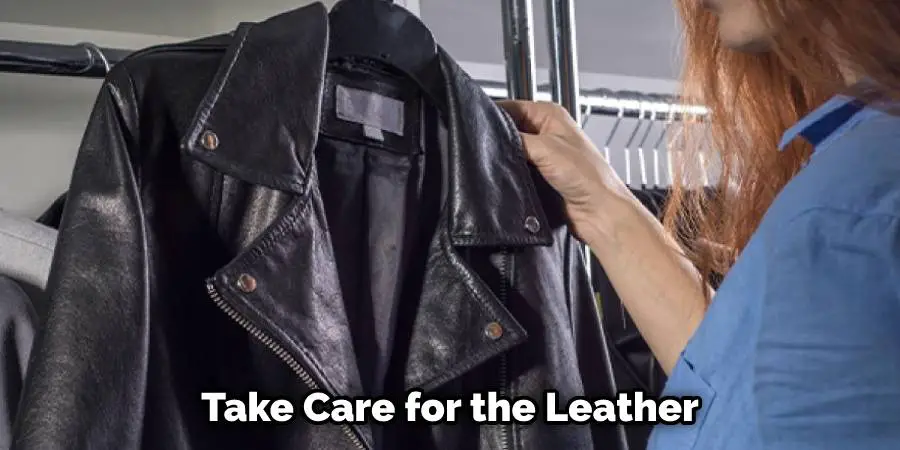
7 Additional Tips and Tricks
- Hang your leather jacket on a sturdy hanger when not wearing it to avoid stretching or creasing the leather.
- Avoid getting the jacket wet and expose it to excessive heat.
- Be careful when wearing accessories that may cause scratches or tears in the leather.
- Only apply a small amount of conditioning product at a time and stop when the leather starts to feel saturated.
- Clean any dirt or stains on the jacket before conditioning to ensure the product is evenly absorbed into the leather.
- Use a brush to work the conditioning product into suede jackets.
- In rainy weather, consider using a waterproofing spray on the leather to protect it from damage.
I hope these tips and tricks help keep your leather jacket looking fabulous! Happy conditioning!
Frequently Asked Questions
What Oil is Best for Conditioning Leather Jacket?
There is no one “best” oil for conditioning leather jackets, as it ultimately depends on the specific type and condition of the leather.
Some commonly used oils include neat’s-foot, mink, and jojoba oil. It’s always a good idea to test a small area before applying oil to the entire jacket.
Additionally, some leather conditioning products also contain oils and may be a good option for those looking for a one-step process. It’s important always to follow the manufacturer’s instructions when using any conditioning products on your leather jacket. Additionally, be sure to properly clean and condition before storing for extended periods of time. Happy conditioning!
What Should You Avoid When Conditioning a Leather Jacket?
- Over-conditioning
- Using the wrong product for the specific type and condition of the leather
- Not properly cleaning or removing any dirt or stains before conditioning
- Exposing the jacket to excessive heat or wet conditions
- Wearing accessories that may cause scratches or tears in the leather
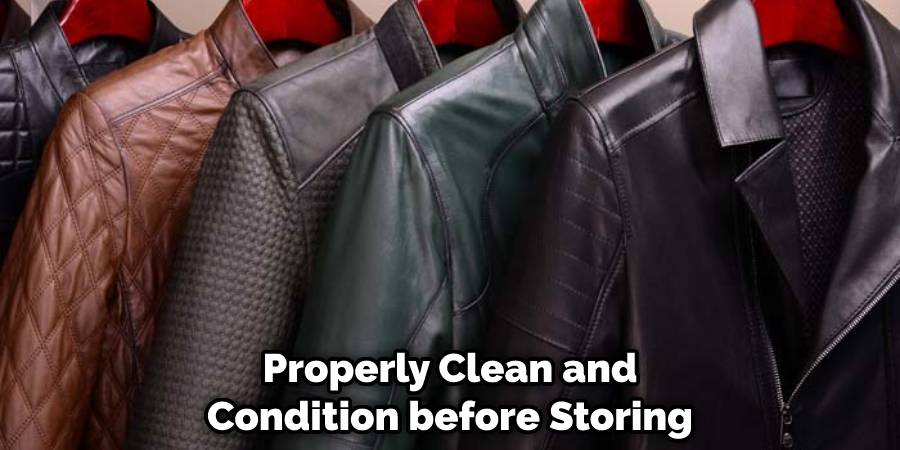
Always follow the manufacturer’s instructions and exercise caution when using any conditioning products on your leather jacket.
Why is Your Leather Jacket So Stiff?
There are a few potential reasons why your leather jacket may be stiff, such as the leather not being properly tanned or treated or insufficient oils and waxes being used during the tanning process.
To soften it, you can gently massage in a small amount of leather conditioner and allow it to absorb overnight. Commercial softening products are also available for purchase, but always follow the manufacturer’s instructions and test on a small area before applying it to the entire jacket.
Additionally, avoid exposing the jacket to excessive heat or wet conditions, which may further damage the leather.
Is Vaseline Good for Conditioning Leather?
While Vaseline can be used as a temporary solution in an emergency, it is not recommended for regular conditioning of your leather jacket.
Vaseline is not meant to be absorbed into the leather and may leave a greasy or sticky residue on the surface. It’s always best to use products specifically designed for conditioning leather to ensure the best results and prolong its lifespan.
Conclusion
Overall, you must take the time to condition your leather jacket on a regular basis. By doing so, you will extend its lifespan and make sure that it always looks its best. With just a little bit of care and effort, your leather jacket can last for years to come!
If you followed the steps in this blog post, your leather jacket should now be soft, supple, and looking great! Regular conditioning is key to keeping leather looking its best, so make sure to condition your jacket at least once a year.
I hope this guide on how to condition leather jacket was helpful. Conditioning your leather jacket is an important part of owning one. By doing it regularly, you can extend the life of your jacket and keep it looking good as new. Thanks for reading, and happy conditioning!

